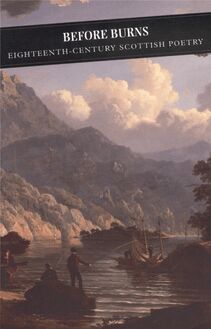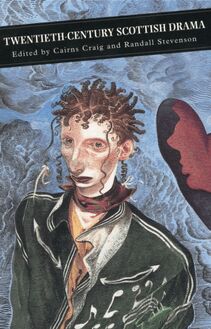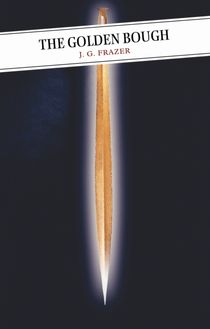-
 Univers
Univers
-
 Ebooks
Ebooks
-
 Livres audio
Livres audio
-
 Presse
Presse
-
 Podcasts
Podcasts
-
 BD
BD
-
 Documents
Documents
-
- Cours
- Révisions
- Ressources pédagogiques
- Sciences de l’éducation
- Manuels scolaires
- Langues
- Travaux de classe
- Annales de BEP
- Etudes supérieures
- Maternelle et primaire
- Fiches de lecture
- Orientation scolaire
- Méthodologie
- Corrigés de devoir
- Annales d’examens et concours
- Annales du bac
- Annales du brevet
- Rapports de stage
La lecture à portée de main

Vous pourrez modifier la taille du texte de cet ouvrage
Découvre YouScribe en t'inscrivant gratuitement
Je m'inscrisDécouvre YouScribe en t'inscrivant gratuitement
Je m'inscrisEn savoir plus
Vous pourrez modifier la taille du texte de cet ouvrage
En savoir plus

Description
Sujets
Informations
| Publié par | Canongate Books |
| Date de parution | 01 juillet 2010 |
| Nombre de lectures | 0 |
| EAN13 | 9781847678072 |
| Langue | English |
Informations légales : prix de location à la page 0,0400€. Cette information est donnée uniquement à titre indicatif conformément à la législation en vigueur.
Extrait
Contents
Introduction
Preface
I. Summary of Events during the Master’s Wanderings
II. Summary of Events ( continued )
III. The Master’s Wanderings: From the Memoirs of the Chevalier de Burke
IV. Persecutions Endured by Mr Henry
V. Account of All that Passed on the Night of February 27th, 1757
VI. Summary of Events during the Master’s Second Absence
VII. Adventure of Chevalier Burke in India: Extracted from his Memoirs
VIII. The Enemy in the House
IX. Mr Mackellar’s Journey with the Master
X. Passages at New York
XI. The Journey in the Wilderness
XII. The Journey in the Wilderness ( continued )
Introduction
The Master of Ballantrae is a challenging book, and numerous readers have puzzled over its dynamics. On the surface the novel looks like an adventure epic a marriage of Kidnapped, Treasure Island and Fenimore Cooper’s leatherstocking tales, with something of the later Kipling, perhaps, in the mysterious Secundra Dass. And yet early readers were puzzled by the book’s final effect, which did not seem to fit the adventure conventions at all.
Andrew Lang described its spirit as ‘elaborate, melancholy and almost hopeless’, finding ‘a very modern gloom’ within its pages. Stevenson’s close friend W. E. Henley (the model for some of Long John Silver’s better attributes) recognised the author’s skill, but reckoned that the book left ‘an impression of unreality… as if you had been awakened from a sinister dream’. ‘ The Master ’, he concluded, ‘is a romance which differs from the romances of Sir Walter [Scott] as a black marble vault differs from a radiant palace.’
Henley thought he was criticising the text but I think he got it exactly right with his remark, for I believe that The Master of Ballantrae is in fact a subversion of romance, a dark revision of Scott, and a left-handed reappraisal of both the territory and the imaginative resources which had been so successfully deployed in Treasure Island and Kidnapped . Let us start with the novel as a subversion of Treasure Island .
The pirate sub-plot in The Master of Ballantrae may seem like only another adventuresome twist to the tale, but in fact it was the starting point of Stevenson’s original inspiration and it clearly demonstrates the darker side of his intention, and why he subtitled his book ‘a winter’s tale’. Treasure Island had its own terrors, but its characters good or bad were worthy of them, and the moral force of the tale survived at the end. But life under Teach’s command (he is not even the ‘real’ Teach we are told), is a series of bungled and fruitless pursuits, with episodes of cowardly and brutal cruelty to those who are too slow or too frightened to escape from a vessel which is itself ‘too foul to overhaul a bottle’.
According to Chevalier Burke the most dangerous thing about being a pirate was having to serve under their own ‘lunatic’ captain; or perhaps they might slip and fall when clambering aboard a surrendered vessel, despite the helpful lines cast down by ‘the poor souls on board … so eager were they to volunteer instead of walking the plank.’ There may not be much romance in this vision of feeble merchants actively helping drunken and incompetent pirates to board their vessel, but there is even less comedy, for the terrified captives were invariably put to death all the same. And all for what? ‘We found many ships and took many’ reflects Burke, ‘yet few of them contained much money … what did we want with a cargo of ploughs …?’
Faced with Teach’s capacity for random and pointless violence the bold Chevalier quickly becomes ‘crowding Pat’ in order to ingratiate himself with the pirates. This vulgar parody of his own Irishness is all the more appropriate in the face of Teach’s own infantile parody of ‘wickedness’ as he appears in a cloud of sulphur with his face blackened and his whiskers curled, chewing glass and shouting ‘"Hell, hell!’" Yet, monstrous as he is, Teach, too, is a feeble thing who is easily outfaced by the Master when he stamps his foot at him and commands ‘"Go down!’" W.E. Henley complained that the pirates in Treasure Island ‘… are sober, cleanly, almost respectable mariners, compared to the raving, loathsome miscreants who formed the crew of the Sarah ’, but once again this is exactly the point, for Stevenson wanted to retell his pirate tale in a darker key.
I think that Stevenson’s final understanding of where such ‘romance’ leads us can be found in the physical descriptions of where the Master ends up. The steaming swamps and the shapeless estuaries of the Bermudas, and latterly the frozen wilderness and the night-time terrors of North America these are the true moral landscape of the Master, an adventurer who can be all things to all men, who decides his course of action, at least three times in the book, by the toss of a coin:
Some parts of the forest were perfectly dense down to the ground, so that we must cut our way like mites in a cheese. In some the bottom was full of deep swamp, and the whole wood entirely rotten. I have leapt on a great fallen log and sunk to the knees in touchwood. I have sought to stay myself, in falling, against what looked to be a solid trunk, and the whole thing has whiffed away at my touch like a sheet of paper.
It is Mackellar, unimaginative as he is, who senses something of this same hollowness in James Durie himself:
… sometimes I would draw away as though from something partly spectral. I had moments when I thought of him as a man of pasteboard as though, if one should strike smartly through the
Such essential emptiness is the very signature of Teach, the pirates, the swamps and the wilderness, and it lies at the heart of the Master too, despite the undoubted force of his will and the power of his charm. The same emptiness can be found at the heart of the Jacobite romance with which the tale begins, for The Master of Ballantrae undermines the world of Kidnapped just as effectively as it reappraises Treasure Island .
Ever since Walter Scott, the conflicting claims of romance and responsibility have been a thematic landmark in the field of Scottish fiction. ‘Highland’ versus ‘Lowland’; ‘past’ versus ‘present’; ‘romance’ versus ‘realism’ are the familiar poles of this debate, all coming down in the end to a struggle between ‘disorder’ and ‘order’. In Kidnapped , Stevenson offered his own version of the theme through the characters of Alan Breck Stewart and David Balfour. It is tempting to see the Byronic James Durie and his duller younger brother Henry in the same roles, but this is not quite right, for when we look more closely we see that there is little honour on either side, nor is there any mutual learning or rapprochement as the story progresses. On the contrary, it ends with increasing hatred, mad obsession and a double death in the wilderness.
In fact the House of Durrisdeer was bereft of honour from the start, for there was no question of ‘coming out’ for Charlie, but rather a kind of double insurance policy in joining both sides of what was shaping up as civil war. It is Henry, ‘not yet very able, but an honest, solid sort of lad’ who sees how shameful this really is. James cries out in fine style that:
‘It is the direct heir of Durrisdeer that should ride by his King’s bridle…’
‘If we were playing a manly part’, says Mr. Henry, ‘there might be sense in such talk. But what are we doing? Cheating at cards!’
And who is the head of this family? He is a man grown prematurely senile, who sits by the fire reading his books all day; a man blind to the failings of his elder son and careless of the virtues of the younger. He has plans to boost his ‘deeply mortgaged’ estate by marrying his heir to a wealthy orphan girl, Alison Graeme, who has been entrusted to his care. And when James is presumed dead at Culloden, the old lord sets out to persuade her, by what Mackellar calls ‘quiet persecution’, to marry Henry, even though she loved James.
Day in, day out, he would work upon her, sitting by his chimney-side with his finger in his Latin book, and his eyes set upon her face with a kind of pleasant intentness that became the old gentleman very well. If she wept, he would condole with her like an ancient man that has seen worse times and begins to think lightly even of sorrow; if she raged, he would fall to his reading again in his Latin book but always with some civil excuse; if she offered, as she often did, to let them have her money in a gift, he would show her how little it consisted with his honour…
The Durrisdeers had a family crest on their stained-glass window, until it was smashed by the coin that sent James to the wars. The old lord and Alison, now married to Henry, refuse to let him mend the missing window pane. Desiring neither the old identity renewed, nor a new identity defined, the pair prefer the mutual seclusion of the chimney-side where they chatter and weep together, jealous of their private heartache, watched over by a blank space. The old heraldic values have been smashed by a golden guinea and the symbolism of this could not be more pointed.
The ‘old cause’, too, is soon revealed as a matter for the kind of lachrimose sentimentality which is both self-serving and self-deceiving, as Tam Macmorland spreads his wild tales of betrayal, and even Jessie Broun (seduced and left pregnant by the Master) joins the drunken chorus weeping for her ‘bonny laddie’. Nor is it long before the ‘laddie’ himself is shown in the same unflattering light, and even the Chevalier Burke’s admiring narrative cannot hide the fact that his hero managed to escape after Culloden at the expense of many friends left behind. Three years after writing Kidnapped , Stevenson has redrawn the fierce pride and the loyalty of Alan Breck into a picture of something positively morbid.
Nothing is as it might seem in this tale, not least because it comes to us by way of three separate narrators, none of whom are wholly reliable or unbiased. But the final
Attention
En entrant sur cette page, vous certifiez :
- 1. avoir atteint l'âge légal de majorité de votre pays de résidence.
- 2. avoir pris connaissance du caractère érotique de ce document.
- 3. vous engager à ne pas diffuser le contenu de ce document.
- 4. consulter ce document à titre purement personnel en n'impliquant aucune société ou organisme d'État.
- 5. vous engager à mettre en oeuvre tous les moyens existants à ce jour pour empêcher n'importe quel mineur d'accéder à ce document.
- 6. déclarer n'être choqué(e) par aucun type de sexualité.
YouScribe ne pourra pas être tenu responsable en cas de non-respect des points précédemment énumérés. Bonne lecture !
-
 Univers
Univers
-
 Ebooks
Ebooks
-
 Livres audio
Livres audio
-
 Presse
Presse
-
 Podcasts
Podcasts
-
 BD
BD
-
 Documents
Documents
-
Jeunesse
-
Littérature
-
Ressources professionnelles
-
Santé et bien-être
-
Savoirs
-
Education
-
Loisirs et hobbies
-
Art, musique et cinéma
-
Actualité et débat de société
-
Jeunesse
-
Littérature
-
Ressources professionnelles
-
Santé et bien-être
-
Savoirs
-
Education
-
Loisirs et hobbies
-
Art, musique et cinéma
-
Actualité et débat de société
-
Actualités
-
Lifestyle
-
Presse jeunesse
-
Presse professionnelle
-
Pratique
-
Presse sportive
-
Presse internationale
-
Culture & Médias
-
Action et Aventures
-
Science-fiction et Fantasy
-
Société
-
Jeunesse
-
Littérature
-
Ressources professionnelles
-
Santé et bien-être
-
Savoirs
-
Education
-
Loisirs et hobbies
-
Art, musique et cinéma
-
Actualité et débat de société
- Cours
- Révisions
- Ressources pédagogiques
- Sciences de l’éducation
- Manuels scolaires
- Langues
- Travaux de classe
- Annales de BEP
- Etudes supérieures
- Maternelle et primaire
- Fiches de lecture
- Orientation scolaire
- Méthodologie
- Corrigés de devoir
- Annales d’examens et concours
- Annales du bac
- Annales du brevet
- Rapports de stage














